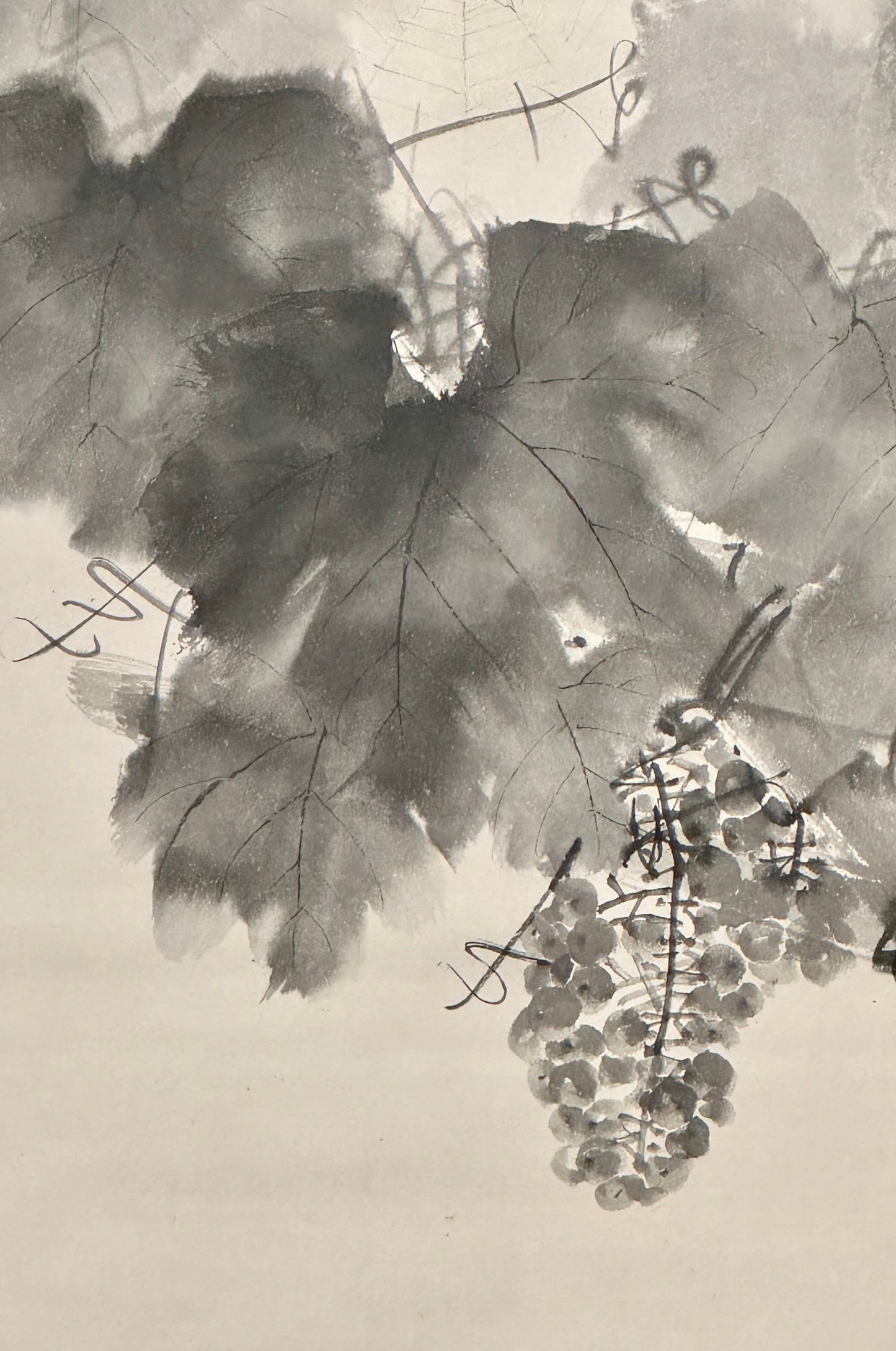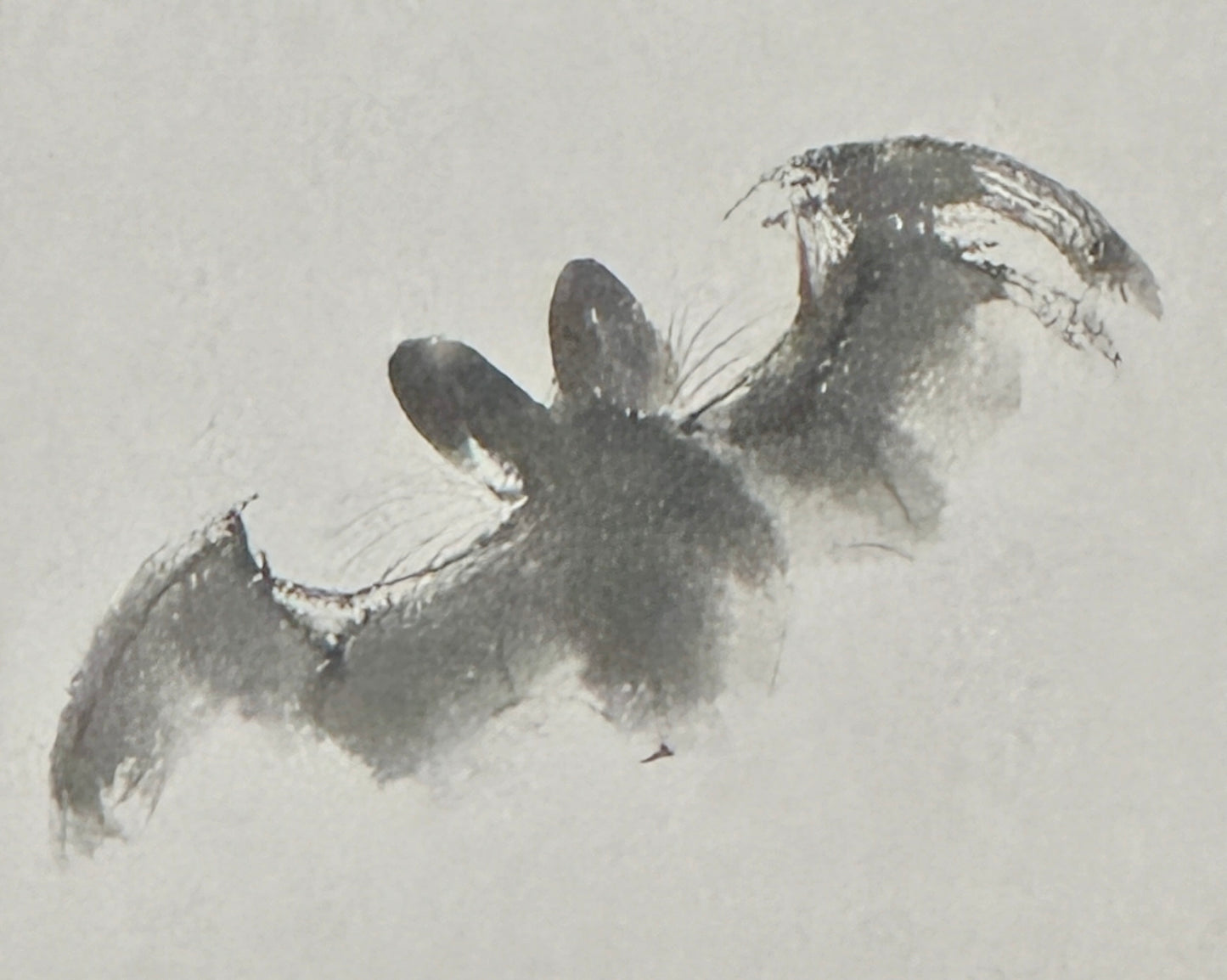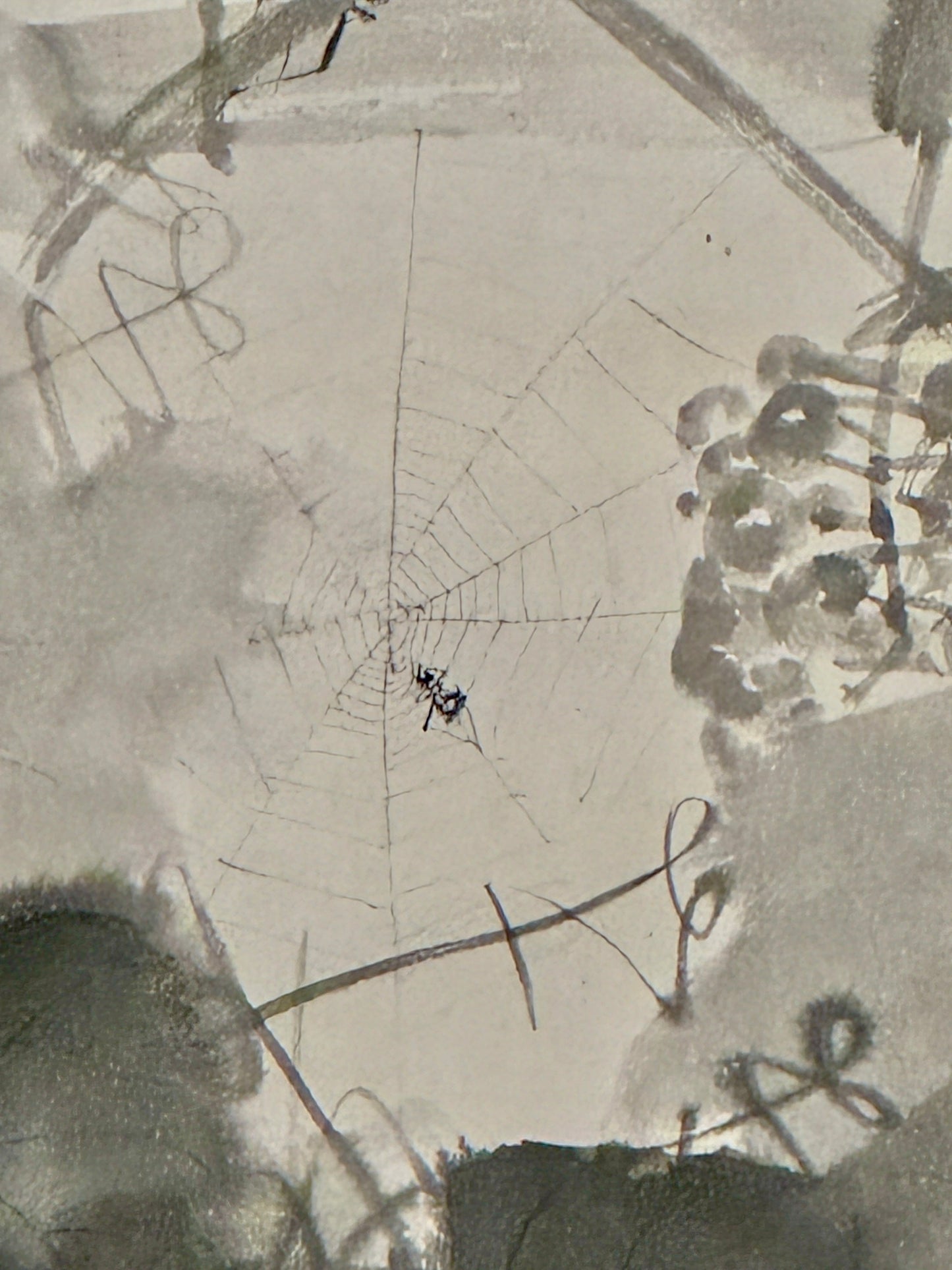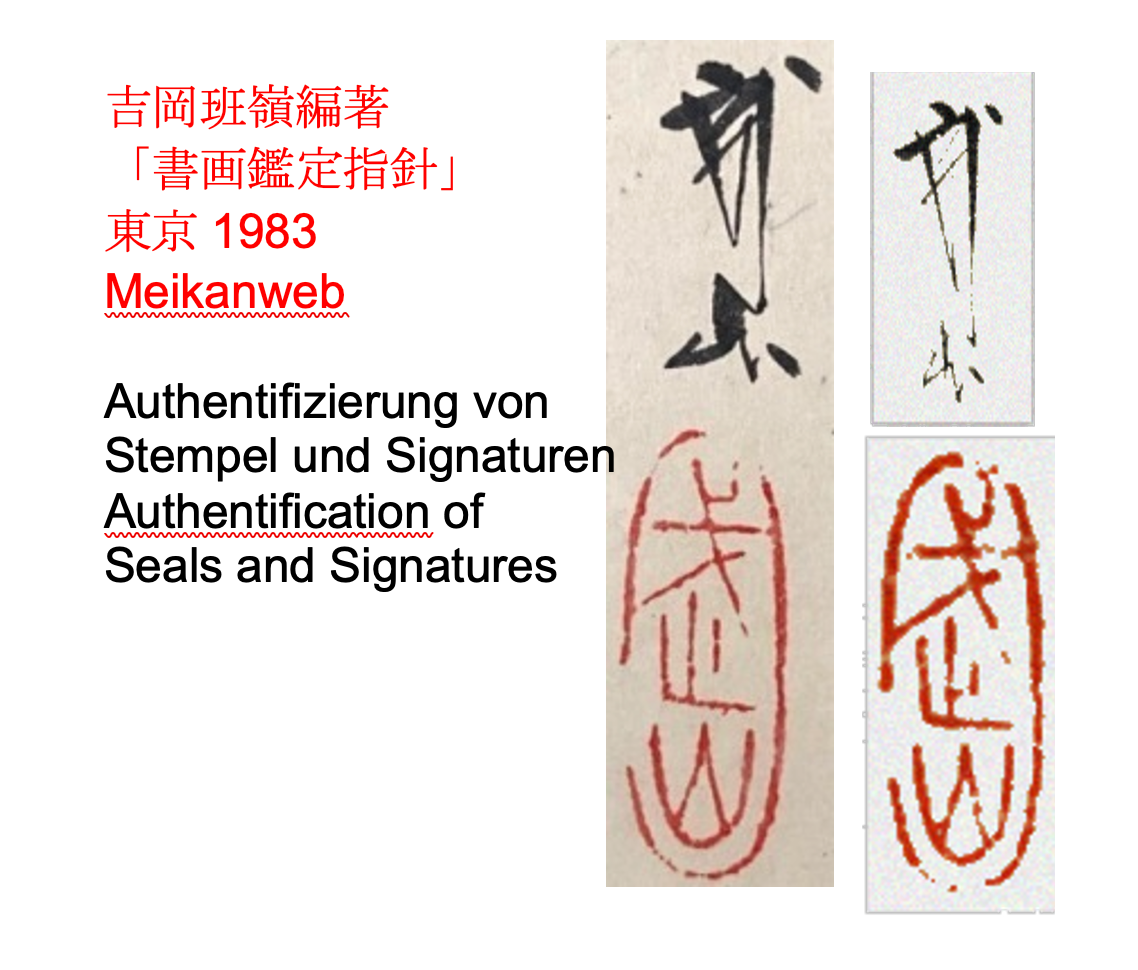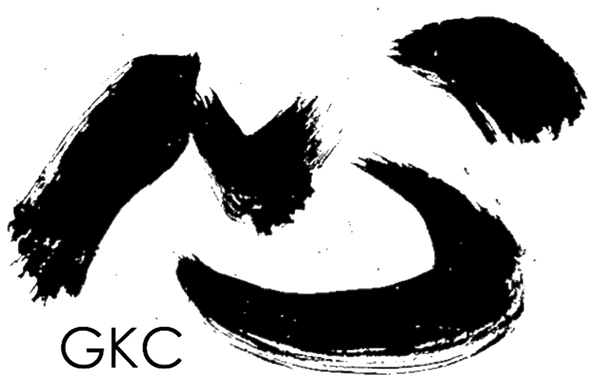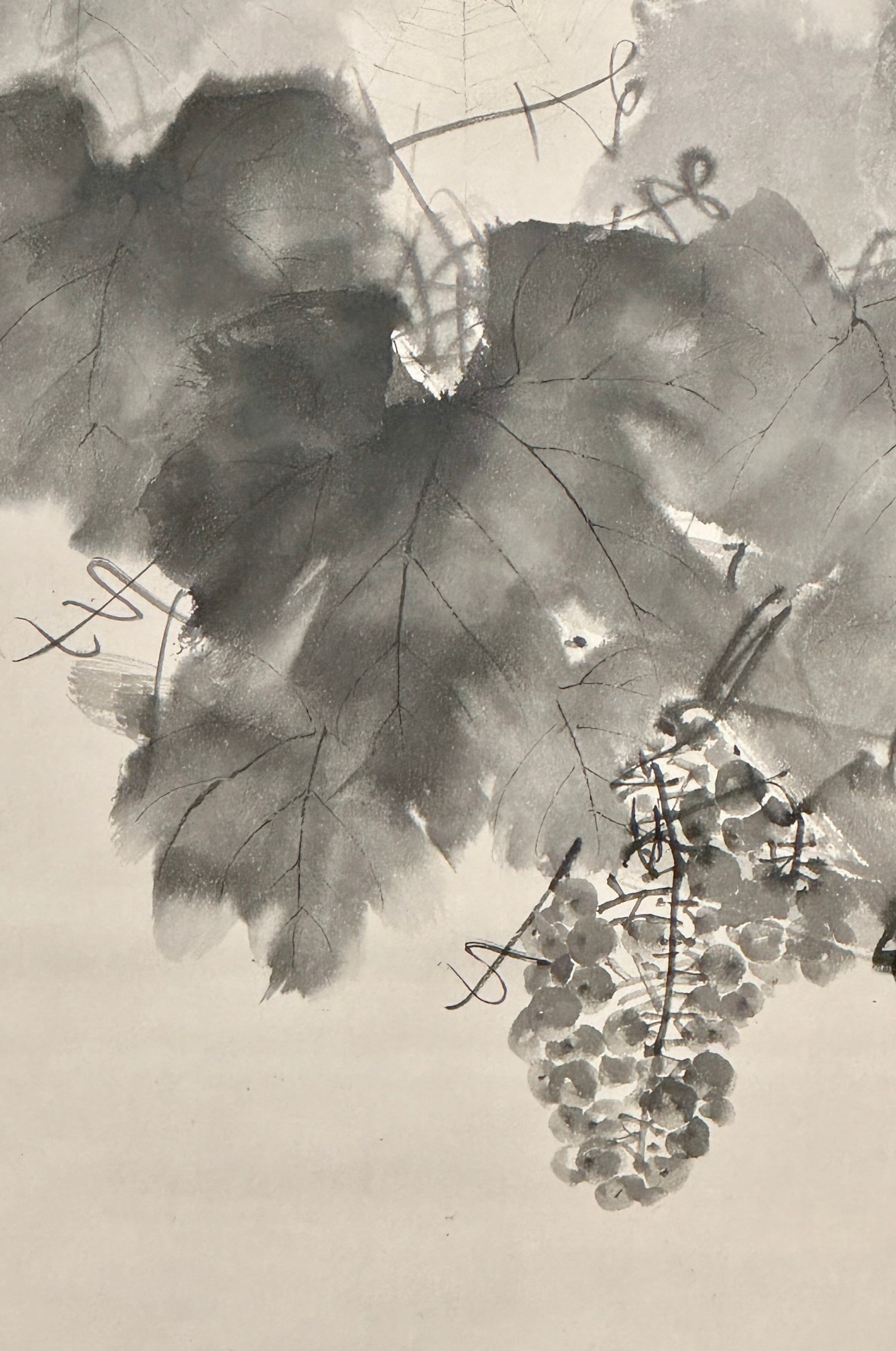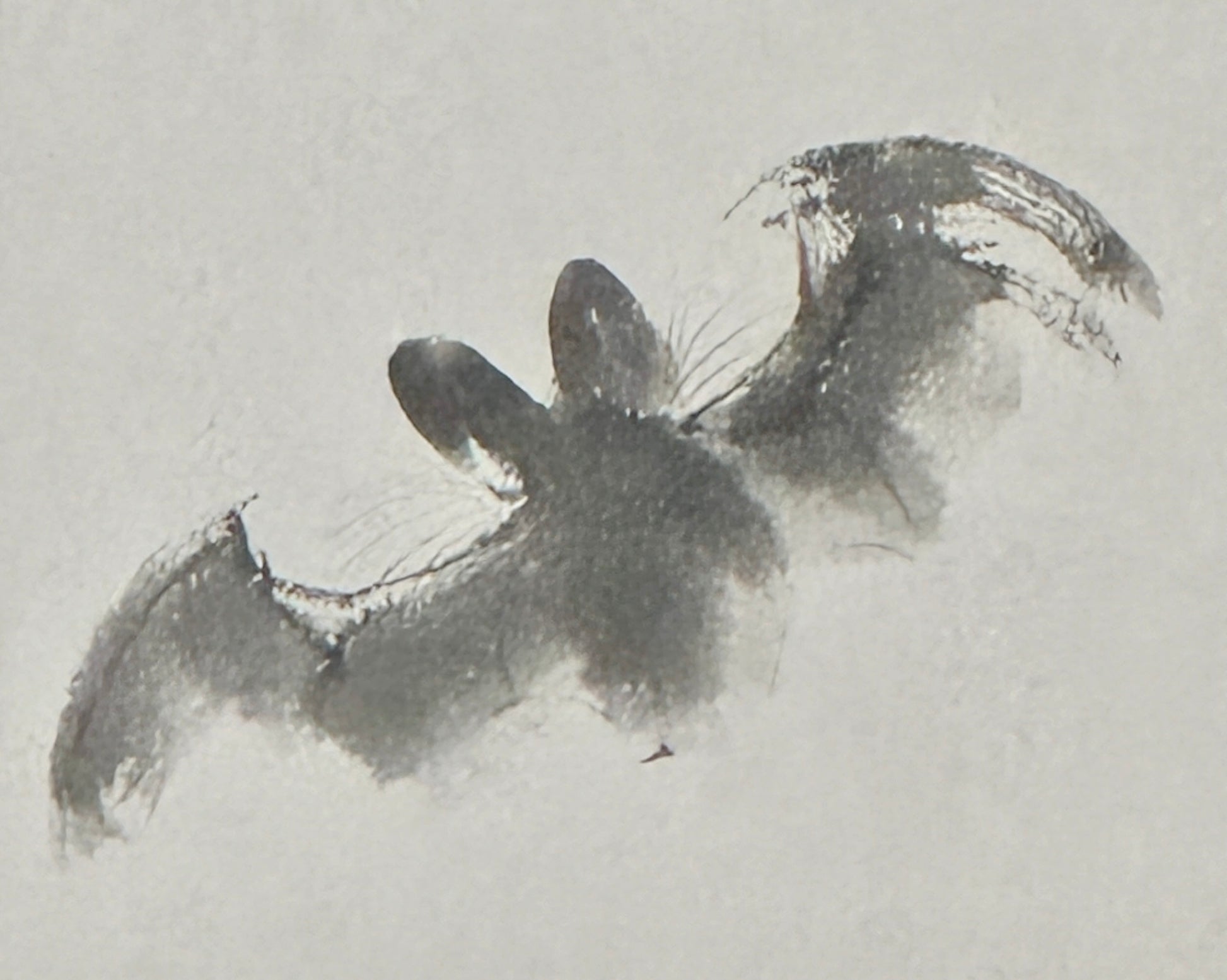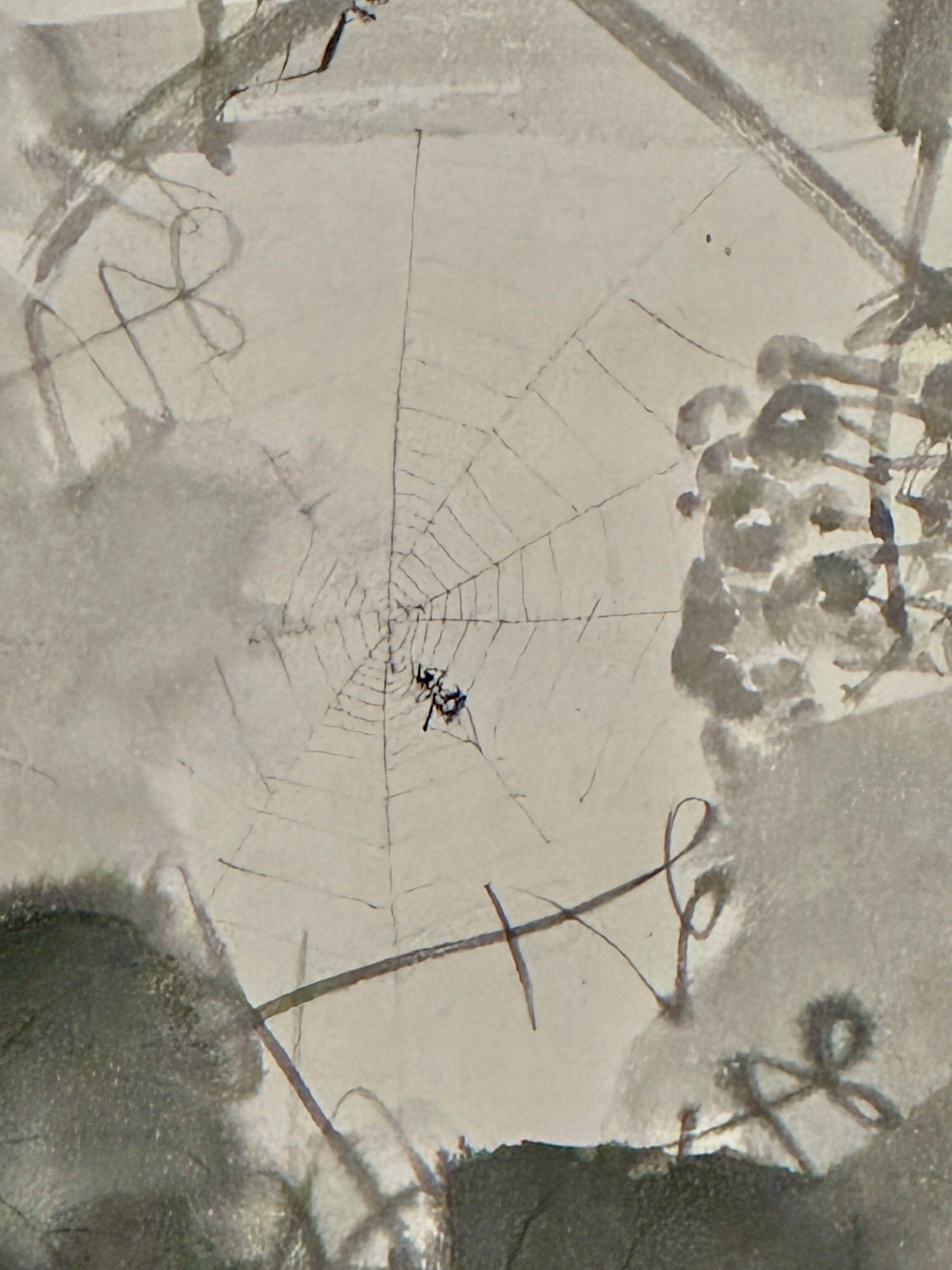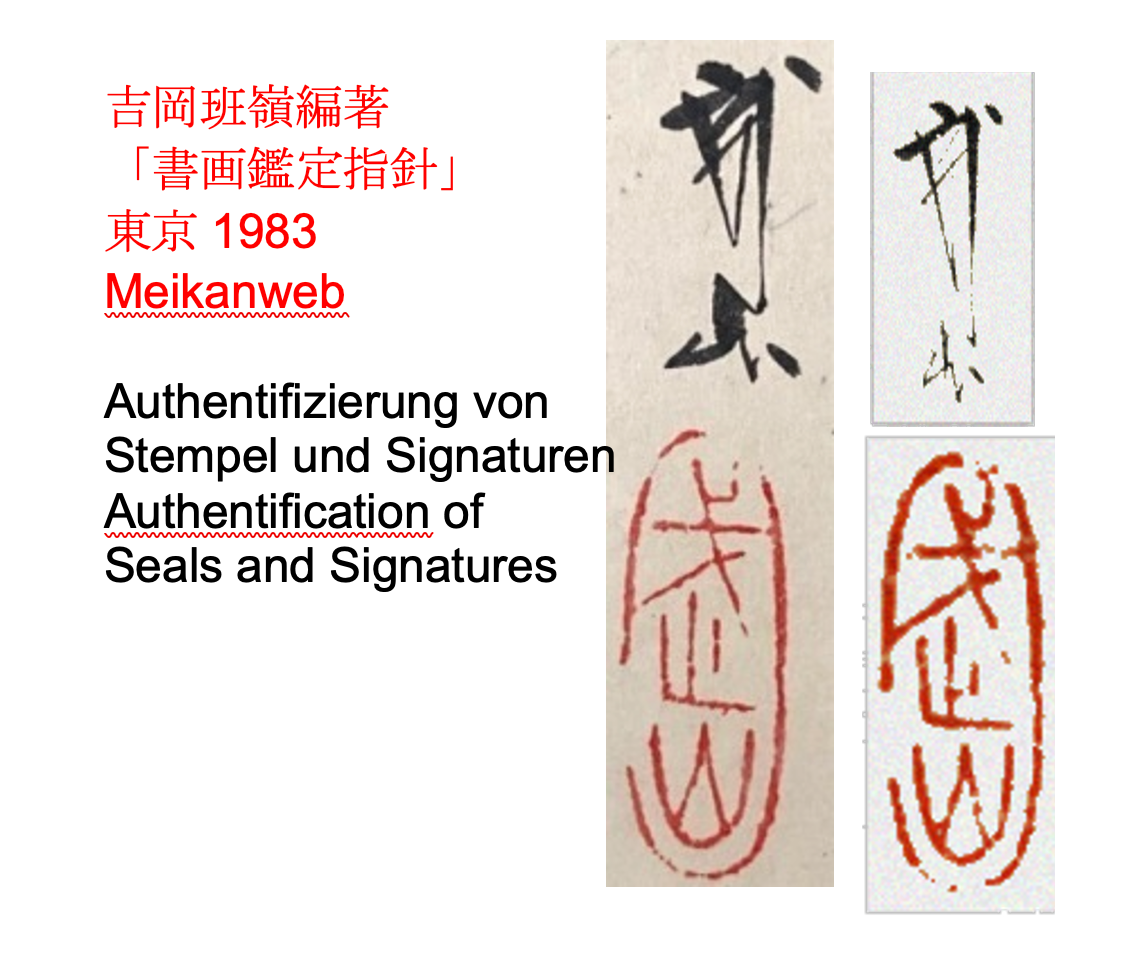Guignard Kyoto Collection
Bat, spider web | Kimura Buzan 木村武山 | 1876-1942
Bat, spider web | Kimura Buzan 木村武山 | 1876-1942
Couldn't load pickup availability
Kimura Buzan is an undisputed master of nihonga. This style emerged in the Meiji period (1867-1912) as a counterweight to the aggressive influx of Western painting at that time. Nihonga actually just means "Japanese painting", but it refers to a style that adapts Western techniques and attempts to use these means to develop a new Japanese pictorial sensibility.
The two animals in this picture are primarily Chinese symbols of good luck (Buzan in particular tried to integrate not only Western elements into the Japanese art idiom, but also Chinese ones). Although the bat can still be found as a motif in Japanese arts and crafts, the spider is rarely found as a symbol of good luck. The two characters for bat蝙蝠bianfu are pronounced the same (or at least very similar) to "luck" in Chinese - the spider is called ximu "lucky insect" in China.
Buzan loved bold compositions. His love of brush virtuosity is first evident in the bat: wild, watery ink spots are tamed by fine strokes, giving the animal agility and life. The equally dark, almost pathetically painted grape leaves contrast effectively with the fine spider web that is spread out in the foliage.
Last but not least, the graphically somewhat exaggerated signature reveals the artist's penchant for the pointed, the astonishing. This is nihonga not as a desperate adherence to traditional aesthetics, but as an expression of the self-confidence of a great Japanese artist.
